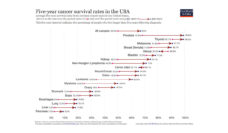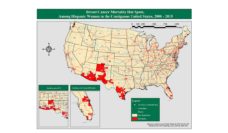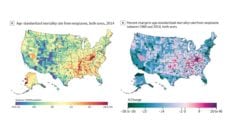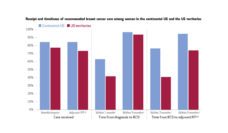The standard for detecting breast cancer is imagery – either by mammogram or ultrasound. However, breasts are not uniformly photogenic.
Tumors are typically visible in mammograms because they appear as opaque areas of growth in stark contrast with surrounding fatty tissue that appears lighter. Some breasts have a comparatively higher proportion of dense tissue. The denser tissue also appears opaque in mammograms and therefore is sometimes indistinguishable from cancerous abnormalities. This can lead to missed cancer diagnoses.
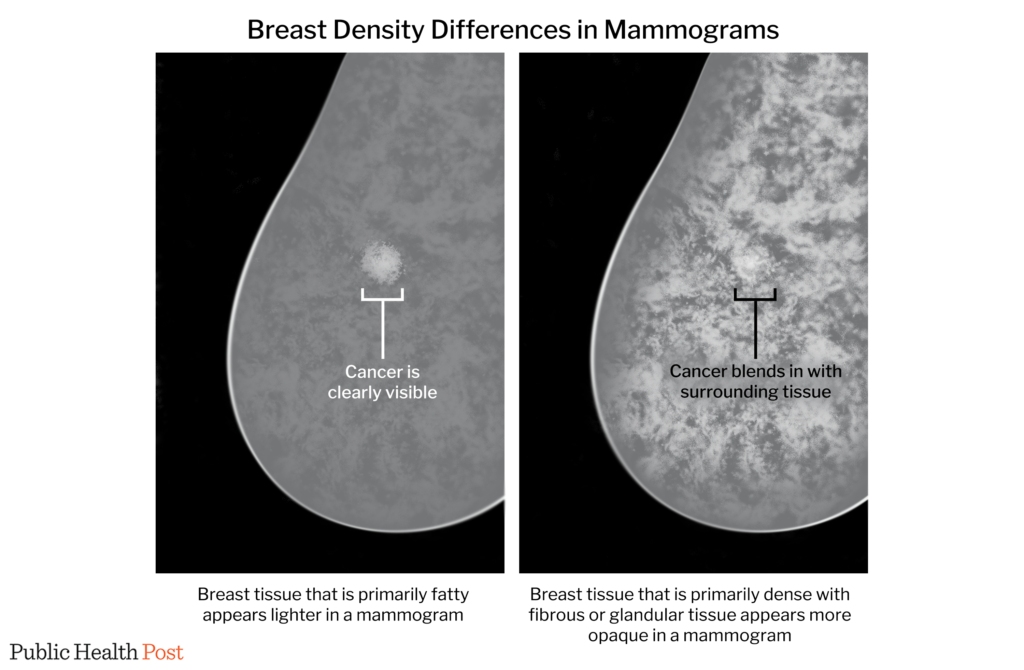
Dense breast tissue is normal and more common in women of younger reproductive age when breasts are more fibrous and glandular. Although the level of density ranges, around half of the female population has dense breast tissue, making them more vulnerable to false negative tests, the report of a normal examination when a tumor was actually present. Yet women are largely unaware if their breast tissue is dense and that detection imagery may be less accurate for them. Women with dense breasts are also 1.5 – 2 times more likely to develop breast cancer than those with more fatty tissue.
To increase awareness, grassroots organizers advocated for laws mandating that physicians disclose breast density status to patients. Today, 38 states have breast density notification laws. To gauge the effect these laws have on awareness and understanding of breast density, Kelly A. Kyanko and colleagues conducted a survey of women between the ages of 40 and 50. They compared awareness, understanding, and anxiety among women living in states with dense breast notification laws to those in states without such a law.
Individuals in states with notification laws were more likely to be aware of their breast density status. But Black and Latinx women and those with less education did not equally benefit from the disclosure. Further, the laws failed to improve women’s understanding that breast density affects cancer risk and effectiveness of mammogram screening.
The key lies in communication that enhances patient understanding of breast density and guides next steps, rather than avoiding disclosure of density entirely.
On the bright side, the study discovered that the laws do not appear to cause an increase in anxiety despite some medical professionals’ fear that disclosing a patient’s density status and increased cancer risk would lead to undue screening and fear. Advocates argue that patients deserve to be made aware of their density status so they can make informed decisions. Supporting studies indicate that educating patients more fully may help to alleviate anxiety, rather than contribute to it.
The study results suggest that although notification laws are effective at increasing awareness without elevating anxiety, disclosure alone is not helpful for everyone and doesn’t communicate the full picture. Notification is only the first step. Awareness of density status needs to be accompanied by a full understanding of what that status means. Dr. Christine Gunn of Boston University School of Medicine explains that even when patients are notified, “the letters themselves are often a bit convoluted and difficult to interpret.”
Dr. Gunn is a member of a research team interested in developing and implementing effective patient communication about breast density. The team assessed available educational material and found that the writing was often too complex for the average reader and misaligned with patients’ needs. Dr. Gunn stresses that educational material should be written in plain language that everyone can understand, regardless of education level. The key lies in communication that enhances patient understanding of breast density and guides next steps, rather than avoiding disclosure of density entirely.
In 2019, the FDA approved a proposed policy to institute dense breast notification across all 50 states. Once implemented, the regulation will help standardize terminology. Along with this improvement, the FDA will need to do additional work to ensure that written material is appropriate and accessible to all, an important step toward meaningful conversations between doctors and patients.
Photo via Getty Images











